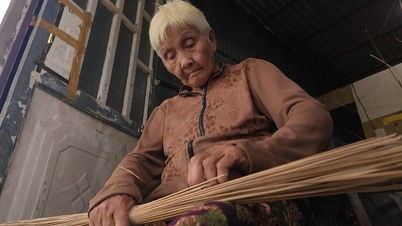Causes of Celiac Disease
Celiac disease occurs when the body's immune system reacts abnormally to gluten, attacking and damaging the lining of the small intestine. As a result, the small intestine cannot absorb some essential nutrients, leading to malnutrition if the condition persists.
The main cause of the disease is an allergy to gluten. When a person eats foods containing gluten, the immune system sees this substance as a "harmful agent" and reacts by damaging the lining of the small intestine.
Common symptoms
Common symptoms of celiac disease include:
- Diarrhea, loose, gray, foul-smelling, foamy stools
- Weight loss, slow growth, slow development (in children)
- Flatulence, abdominal pain
- Mouth ulcers
- Blisters, rash
- Tired, pale, weak
- Muscle cramps
In adults, the symptoms are often less obvious than in children, so diagnosis is usually made through blood tests. Doctors recommend that if you experience the above symptoms or have digestive disorders lasting more than 2 weeks, you should see a doctor early for timely detection and treatment.
Celiac disease usually first appears in children when they start eating foods containing gluten. It is a genetic disease and is more common in children in Western Europe.

Celiac disease, also known as gluten intolerance, is a condition in which the body is allergic to foods containing gluten.
Who is at risk?
Celiac disease can occur in anyone, however, the risk is higher in people who:
- Have a family member with Celiac disease
- Have Turner or Down syndrome
- Suffer from autoimmune thyroid disease, type 1 diabetes
- Have Sjogren's syndrome
- Have colitis
Diagnostic methods
To detect the disease, patients need to stop using foods containing gluten (if any) before testing to ensure accurate results.
Some commonly used tests include:
- Serum testing: looks for antibodies that react to gluten in the digestive tract.
- Genetic testing: identifies antigens in genes associated with Celiac disease.
- Small bowel endoscopy: assess the extent of intestinal mucosal damage to provide appropriate treatment.
Treatment and doctor's advice
Currently, there is no cure for Celiac disease, but it can be effectively controlled by following a gluten-free diet. If left untreated, the disease can cause serious complications such as:
- Malnutrition
- Osteoporosis or osteomalacia due to calcium and vitamin D deficiency
- Infertility, miscarriage
- Lactose intolerance
- Increased risk of gastrointestinal cancers (such as small bowel lymphoma)
- Damage to the nervous system, causing seizures or peripheral neuropathy
Advice for patients:
- Visit reputable medical facilities regularly to monitor disease progression and follow your doctor's treatment instructions.
- Do not take medication without professional advice.
- Regular check-ups and full health status reporting to your doctor.
- Build a healthy lifestyle: eat scientifically , exercise regularly, sleep 8 hours a day to improve resistance.
Celiac disease is an autoimmune disorder of the digestive system that occurs when the body is intolerant to gluten – a protein found in wheat, barley and some other grains. If not detected and treated promptly, the disease can lead to malnutrition, anemia, osteoporosis and an increased risk of intestinal cancer.
 Distinguishing between food allergies and food intolerances
Distinguishing between food allergies and food intolerancesSource: https://suckhoedoisong.vn/benh-celiac-nguy-hiem-nhu-the-nao-169251030071858269.htm



![[Photo] Opening of the 14th Conference of the 13th Party Central Committee](https://vphoto.vietnam.vn/thumb/1200x675/vietnam/resource/IMAGE/2025/11/05/1762310995216_a5-bnd-5742-5255-jpg.webp)

![[Photo] Panorama of the Patriotic Emulation Congress of Nhan Dan Newspaper for the period 2025-2030](https://vphoto.vietnam.vn/thumb/1200x675/vietnam/resource/IMAGE/2025/11/04/1762252775462_ndo_br_dhthiduayeuncbaond-6125-jpg.webp)




































































































Comment (0)